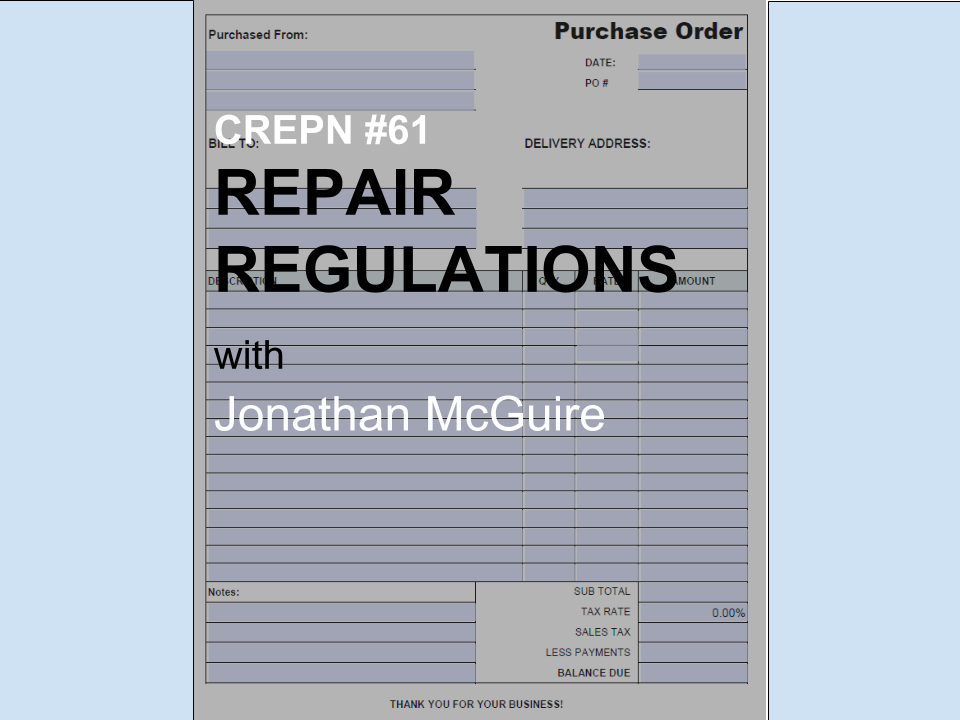
07 Oct CREPN #61 – Repair Regulations with Jonathan McGuire
Posted at 07:00h
in Podcast
flow chart to determine an expense from a capital improvement? [x_audio_embed][/x_audio_embed] SUBSCRIBE iTunes Stitcher I talked with Jonathan McGuire of AKT CPA’s for an in depth look at what changed and how can property owners easily account for the new repair regulations. To follow along with the flowchart we use for our discussion, download the flowchart. https://qc115.infusionsoft.com/app/form/repairregulationsflowchart
History of the IRS Repair Regulations
The ruling stems from a 2003 Federal Court case FEDEX vs IRS in which FEDEX argued the engines were not a Unit of Property, UOP. The court found in favor of FEDEX recognizing that the UOP was the jet and the engine was a part of the whole. The repairs were incidental and necessary expense. To read more about the case go to: http://law.justia.com/cases/federal/district-courts/FSupp2/291/699/2512802/ The case changed the way real estate owners are required to account for repairs that were previously allowed as an expense. To determine an expense from an improvement, there are a number of questions that must be answered.How much can be expensed for routine maintenance?
See flowchart: De Minimis Expensing Safe Harbor Election allows the taxpayer to make an election to expense amounts under a “safe harbor” amount which are not required to be capitalized.- The current safe harbor limit is $2,500 for routine maintenance.
What is a Unit of Property?
The unit of property is the building. The building is comprised of parts. The ruling requires property owners to capitalize these 9 specific structural component systems. Replacement of these component systems are required to be capitalized.- HVAC (heating, ventilation, & air conditioning)
- Plumbing Systems – inside and outside; including water, storm, sewer, and related fixtures
- Electrical Systems – inside and outside; including fixtures, wiring, and distribution
- Escalators
- Elevators
- Fire Protection (sprinklers) and Alarm Systems
- Security Systems – for the protection of the building and its occupants
- Gas Distribution System – inside and outside
- Structural Components – roofs, walls, floors, windows, doors, etc.
What are Capitalization Standards?
(BAR Test)- Betterment: Work that “refresh”, expands or improves the property.
- Adaptation: Work that changes the usage from one class of operation to another.
- Restoration: Replacement or rebuild of a component or multiple component parts.
The give back: Partial Asset Disposals
The new regulations have created a Tax Rate Arbitrage that can save, generally, a minimum of 5% when disposing of partially depreciated unit of property.- ie: A building purchased ten years ago with a 39 year depreciation schedule. Ten years in, the roof is replaced. The 29 years of depreciation remaining on the the worn out roof can be expensed in the year the replacement roof is capitalized.

